Innovative Team Collaboration: 3 Tools for Seamless Project Management
Read More

You know organizations that encourage a feedback culture are 24% more likely to experience high innovation.
And that’s exactly why employee feedback is not to be taken lightly. It is a direct, efficient tool that will propel your workplace to greater heights, enhancing employee experience.
And trust me, it isn’t just about fixing what’s broken, it’s about fostering a culture that’s inclusive, and downright awesome. And for that, all you need is an efficient employee feedback tool at your disposal.
So, let’s find out more about employee feedback, its different types, and the employee feedback surveys that make all this much smoother!
But let’s first start with understanding what employee feedback is and why it matters.
Employee feedback refers to the process of providing and receiving information about an employee’s performance, behavior, or contributions in the workplace. It is a two-way communication where employers share insights with employees, and employees, in turn, offer their perspectives. The goal is to enhance performance, foster professional growth, and contribute to the overall improvement of the work environment.
A study by ZengerFolkman found that organizations promoting feedback-rich cultures are 8.9 times more likely to have effective and efficient employees.
This just shows that you just CANNOT ignore the value of employee feedback!
Here are some more reasons behind the importance of employee feedback:
In essence, employee feedback is not just a box to check; it’s an imperative that fuels communication, empowerment, improvement, team dynamics, and organizational alignment. It’s what keeps the digital workplace engaging, interesting and thriving!
Now that you’ve witnessed how employee feedback increases engagement and strengthens your company, why wait? Launch employee feedback surveys right away!
Let’s now know more about the different varieties of employee feedback that can take your employee experience to the next level!

In the dynamic realm of professional growth and development, various types of feedback play distinct roles in shaping individuals, teams, and organizations.
So, here are 6 types of Employee Feedback that can help you boost your employee experience:
For example –
For example –
For example-
For example-
For example-
For example-
For example-
For example-
Imagine a tech company where a team of developers is working on a critical project with tight deadlines. The team has been grappling with challenges, and the project is at risk of falling behind schedule. The manager, recognizing the importance of effective feedback, decides to conduct a feedback session. During the session, team members express their concerns about the complexity of certain tasks and the need for additional resources. They implement changes based on the insights gathered.
As a result of this feedback-driven intervention, the team experiences a significant boost in morale and productivity.
Doesn’t that sound wonderful?
Now, every organization needs a robust understanding of employee feedback and its implementation to have an impact on their employee experience as well as their company’s work culture and productivity.
So here are the 4 pillars that can help you create an effective employee feedback mechanism for your organization:
According to a study by Harvard Business Review, employees in safe environments are more likely to share innovative ideas and take risks that can lead to groundbreaking solutions.
This means fostering an atmosphere where employees feel secure and confident in expressing their opinions, ideas, and concerns without fear of reprisal or negative consequences. When employees feel safe, they are more likely to provide honest and constructive feedback. This is crucial for identifying areas of improvement and innovation within the organization.
How to achieve this:
Move beyond the annual surveys and start gathering feedback regularly. Because only when you gather consistently and after short intervals, can your teams adapt fast to changing goals and priorities. Plus, all that feedback helps build a culture of constant improvement, which means happier and more engaged employees overall.
And the Harvard Business Review study says the same – Companies giving regular feedback see a whopping 3.6 times more engaged employees than those who don’t.
How to achieve this:
Vague feedback lacks detail and clarity, making it difficult to understand or act upon, while specific feedback provides clear guidance for improvement.
For instance, if I tell you “Good job,” it doesn’t really tell you if there is anything you could improve. On the other hand feedback like “Your presentation was engaging, but consider slowing down for clarity” tells you exactly what you need to improve!
That’s why I say avoid generalizations and focus on distinct aspects of performance. It is constructive and guides steps the recipient can take to improve their performance.
And get this – A Harvard Business Review study found that 72% of employees who receive specific feedback are more likely to achieve their objectives.
How to achieve this:
Deloitte says organizations with a culture of open communication are 3.5 times more likely to be innovative and agile.
But open communication isn’t about talking, but about listening. And active listening goes beyond just hearing words. Because when individuals feel heard, they are more likely to be invested in their work and the overall success of the organization.
How to achieve this:
Are your employees unsure about sharing their identity? Worry not! Create anonymous employee feedback surveys with SurveySensum!
Now, let’s delve into the various types of Employee Feedback Surveys.
Employee feedback surveys are crucial tools for gauging employee satisfaction, engagement, and overall sentiment within an organization. There are various types of employee feedback surveys, each serving different purposes.
Wondering which one does what job and how it can help you to boost your organization’s work culture?
Well, let’s discuss all the types of employee feedback surveys along with their examples:
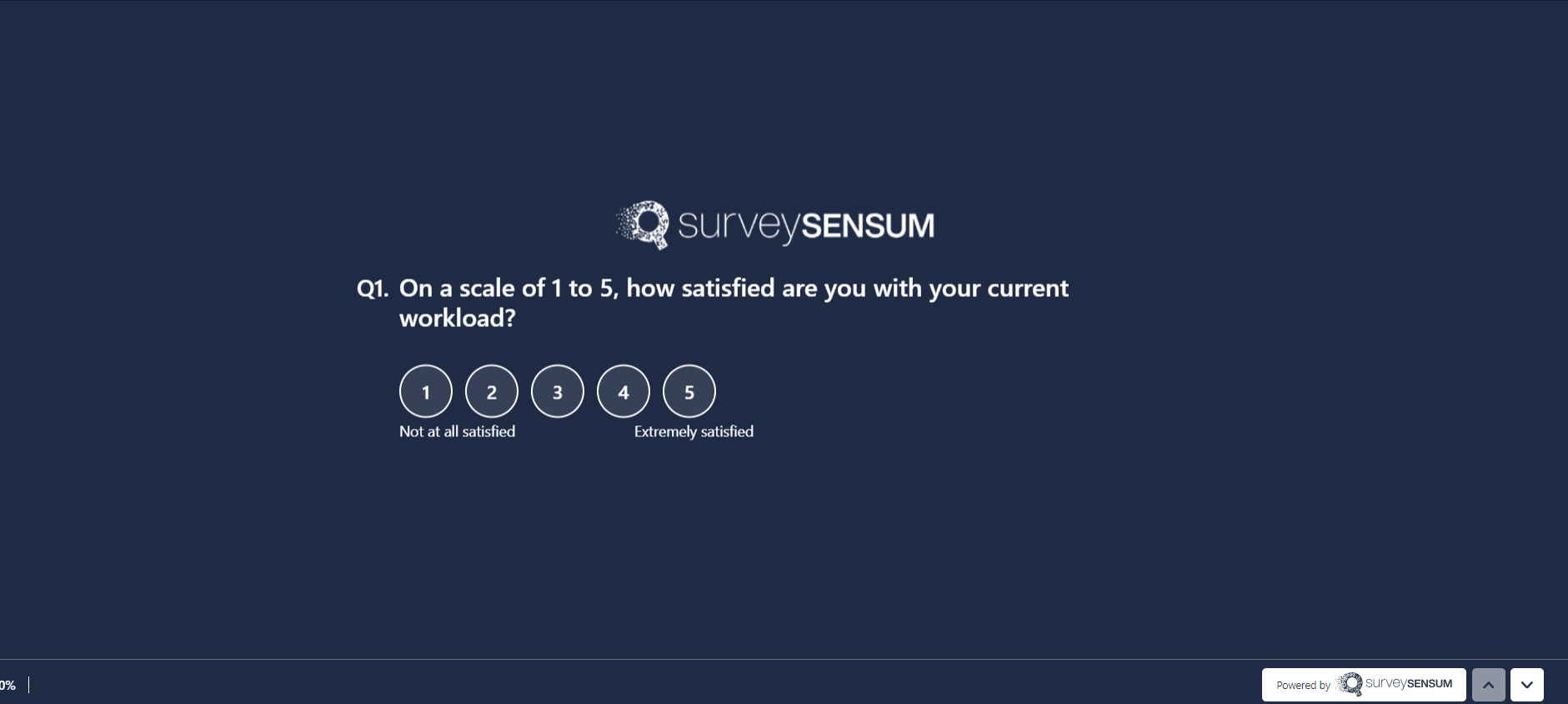
Employee Engagement Surveys assess and quantify the degree of employee engagement. The surveys are designed to comprehensively evaluate various facets, including but not limited to job satisfaction, motivation, and loyalty.
Example Questions:
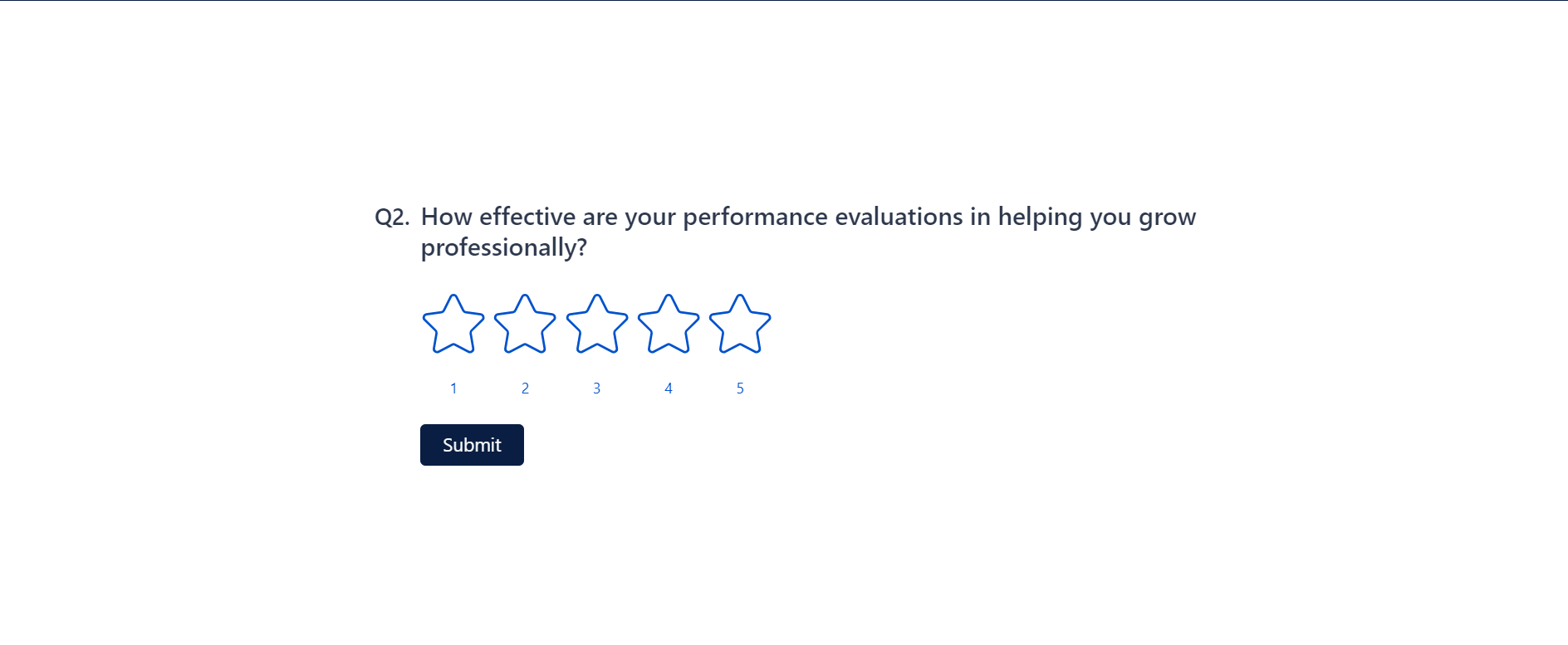
These surveys assess an employee’s performance in several areas, such as job knowledge, communication skills, productivity, student productivity, and the quality of their work. Performance evaluation surveys are typically conducted regularly, such as semi-annually or annually.
Example Questions:
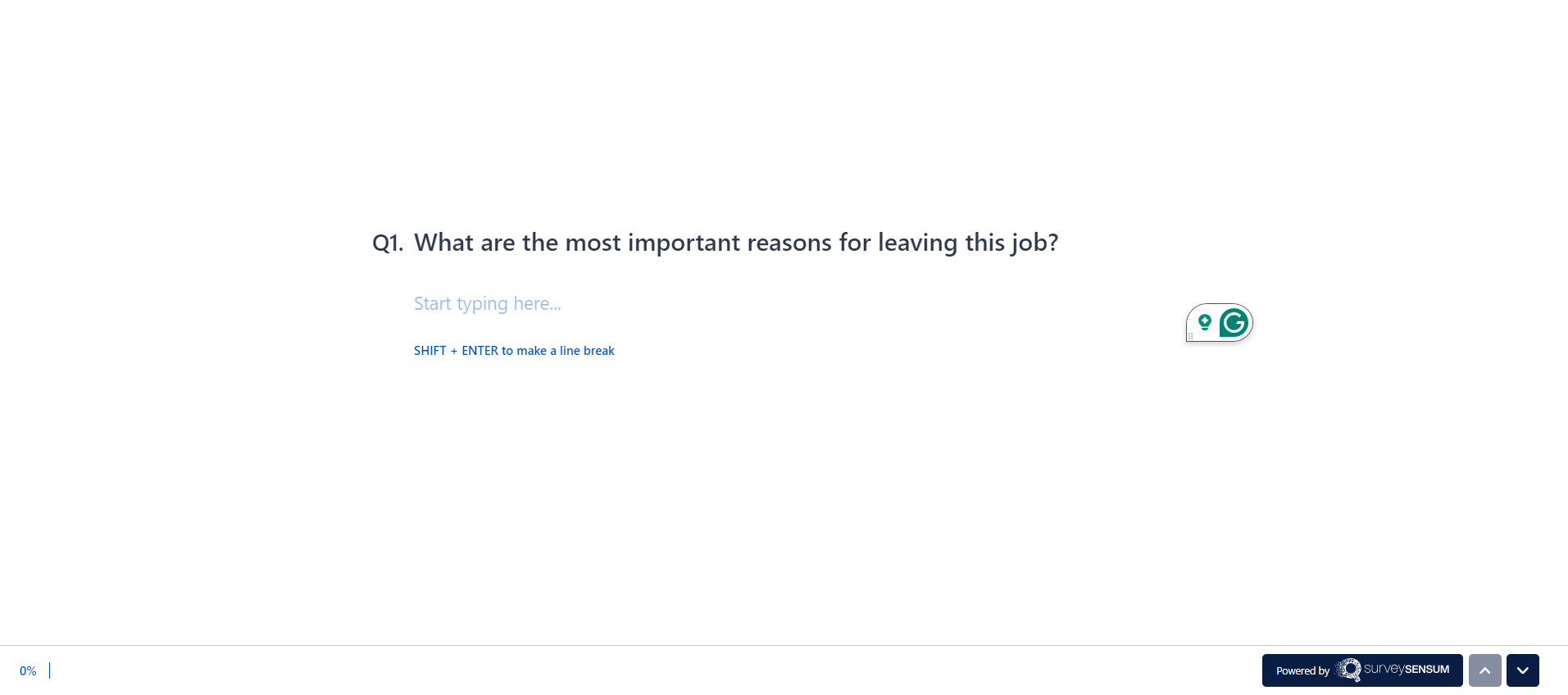
Why did your employee leave the organization?
Well, that’s where employee exit surveys come in. They help you understand the reasons surrounding employee departures from an organization. They are conducted when employees decide to part ways with the company, offering a structured platform to collect detailed feedback regarding the reasons for their departure, their overall experience during their tenure, and areas where the organization could potentially improve.
Example Questions:
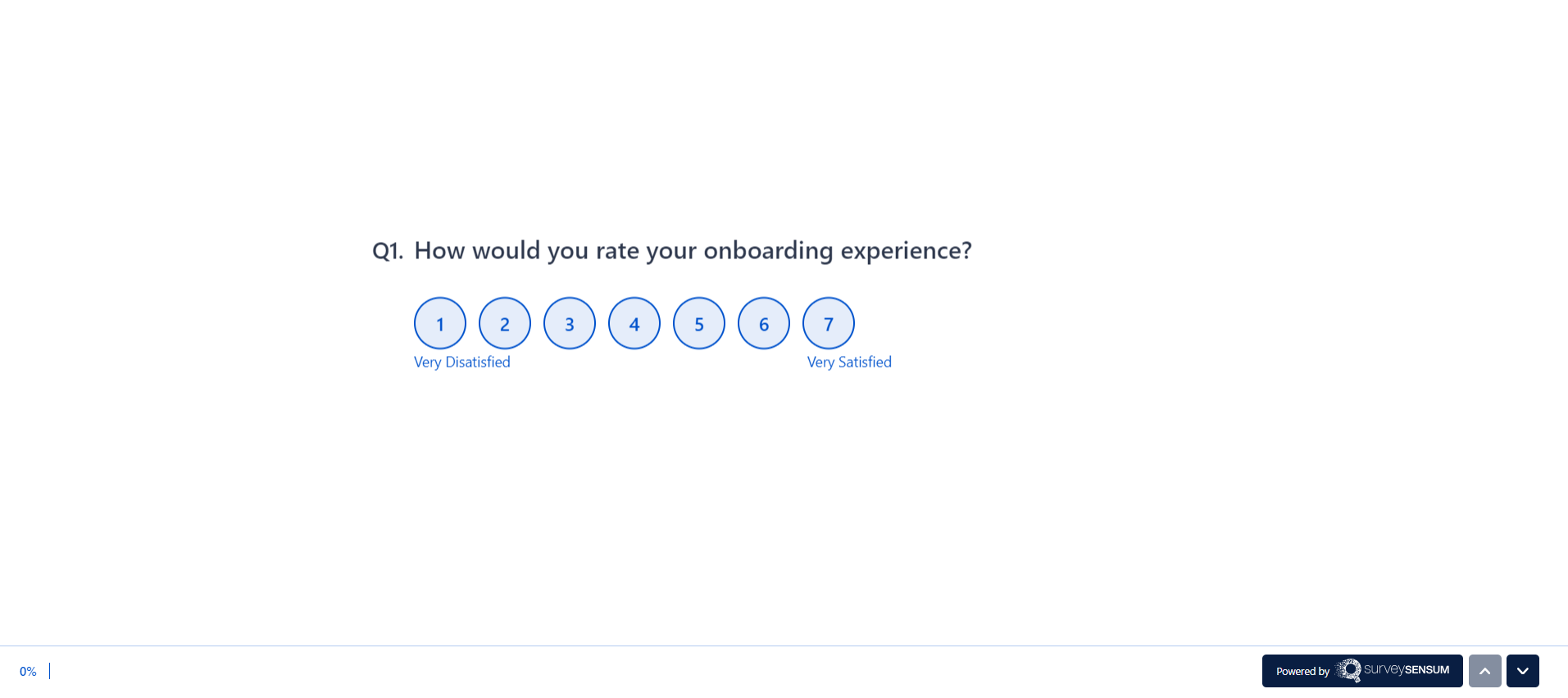
Employee onboarding surveys play a pivotal role in the continuous improvement of an organization’s onboarding process by offering valuable insights into the initial experiences of newly hired employees. Administered during the crucial early days of employment, these surveys aim to capture feedback on various facets of the onboarding journey.
Example Questions:
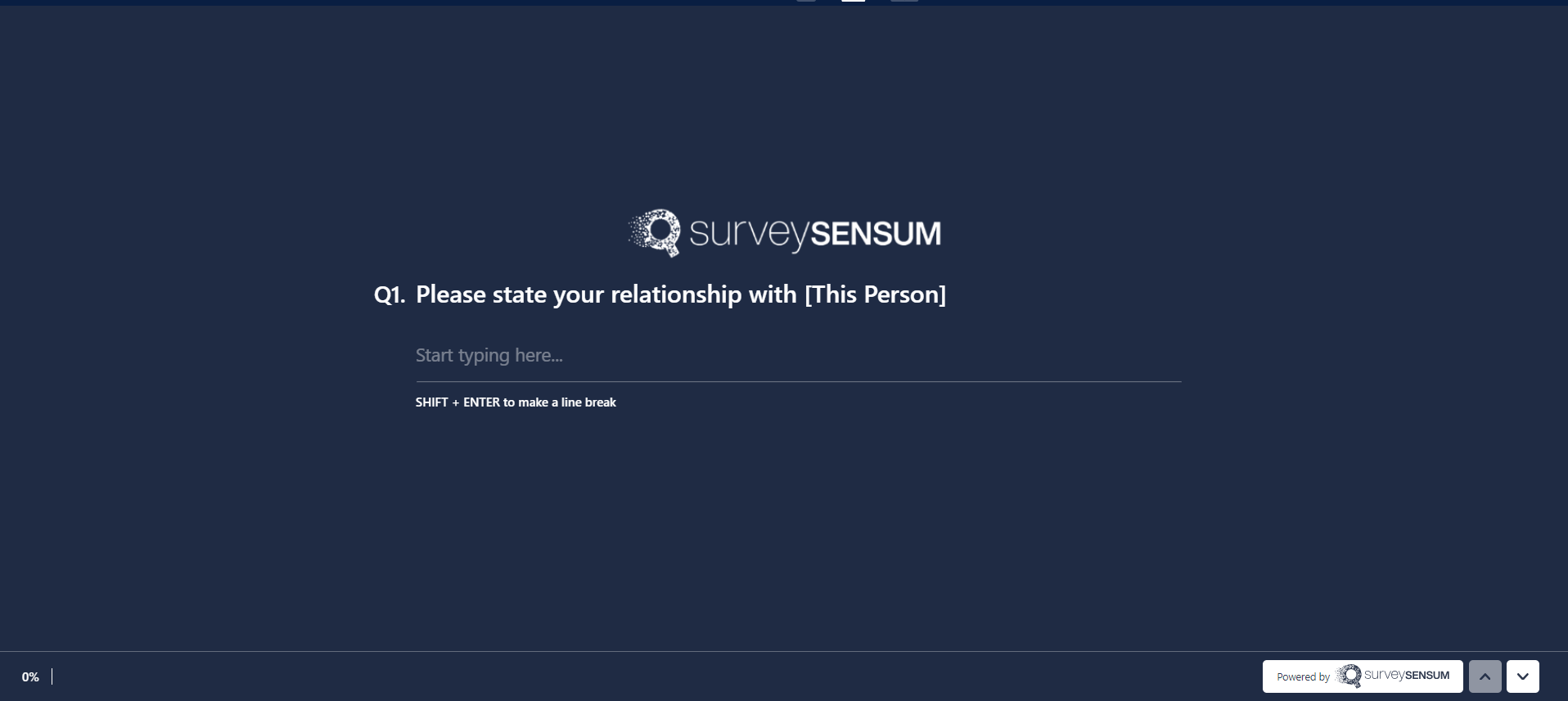
360-degree feedback surveys help collect feedback about a worker’s performance from peers, bosses, and self-evaluations. If an employee engages with the public, input from clients, vendors, contractors, or suppliers can also be included in a 360-degree survey.
Example Questions:

Pulse surveys are designed to be shorter and more frequent, and gauge employee sentiments on various aspects of the workplace environment. These surveys act as brief yet powerful tools, offering organizations a pulse check on critical factors such as employee morale, satisfaction levels, and immediate concerns.
Example Questions:
It’s established that employee feedback surveys can take your employee experience to a new level – boosting engagement and satisfaction which directly impacts the business revenue. So it’s time to start gauging your employee feedback
So, you’ve decided to dive into the world of employee feedback – fantastic choice!
However, implementing employee feedback effectively requires a thoughtful approach that considers feedback frameworks, the right tools, training, and the right strategy for navigating difficult conversations. But how do you turn this intention into a reality?
Here’s a breakdown of best practices for each aspect:
Constructing effective feedback frameworks and methodologies for employee feedback is fundamental in nurturing a workplace culture of continual improvement and employee engagement. These frameworks gather, analyze, and act upon feedback, ensuring a comprehensive understanding of employee sentiments.
Here are the ways in which you can implement these in your workplace:
Remember, it’s not just about the feedback – it’s about weaving it into your workplace’s DNA.
Alright, let’s talk about leveling up your feedback game. When it comes to technology platforms, here’s what you should do:
Select a robust employee feedback platform. Invest in a user-friendly platform that turns the feedback journey into a breeze.
Look out for features like anonymous feedback options, customizable survey templates, closed-loop automation, and real-time reporting.
And the best part is if it comes with an end-to-end consultation!
To make the best of your employee feedback journey, your managers and employees should know how to accurately go about the process. And for that make sure to:
Incorporating these aspects into your employee feedback process will make the ordeal much more pleasant and smooth. Now let’s explore how you can put these into action.
The process of giving and receiving feedback can be difficult to traverse through. Follow these steps to ensure a better experience for your employees:
Armed with these feedback strengths, your team is surely set to grow and improve!
Employee feedback is essential to the overall health and success of a business. It keeps the workplace culture lively, interactive, and inclusive. This approach not only enhances performance and employee experience but also contributes to goal achievement and skill development.
To take your employee experience to the next level, you would need an effective employee feedback tool at your disposal to get the job done! And for that, you have to look nowhere other than SurveySensum! With this tool, you can easily evaluate employee satisfaction by automating surveys, including pulse and eNPS surveys. Beyond that, its AI-driven dashboard empowers you to make well-informed decisions, converting them into concrete actions and establishing the foundation for a resilient and future-oriented environment customized to meet the needs of your workforce.
